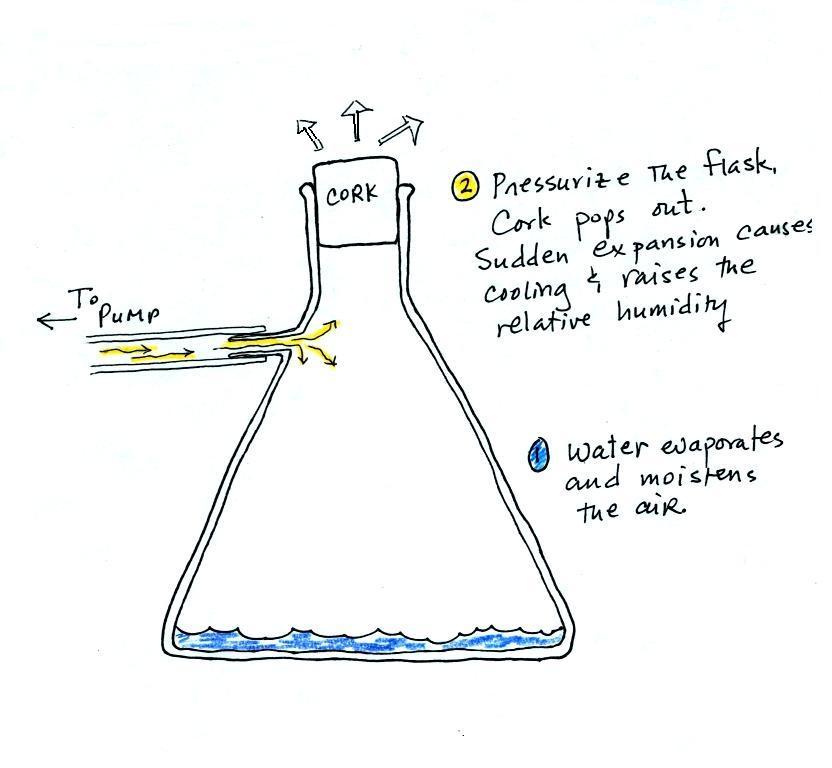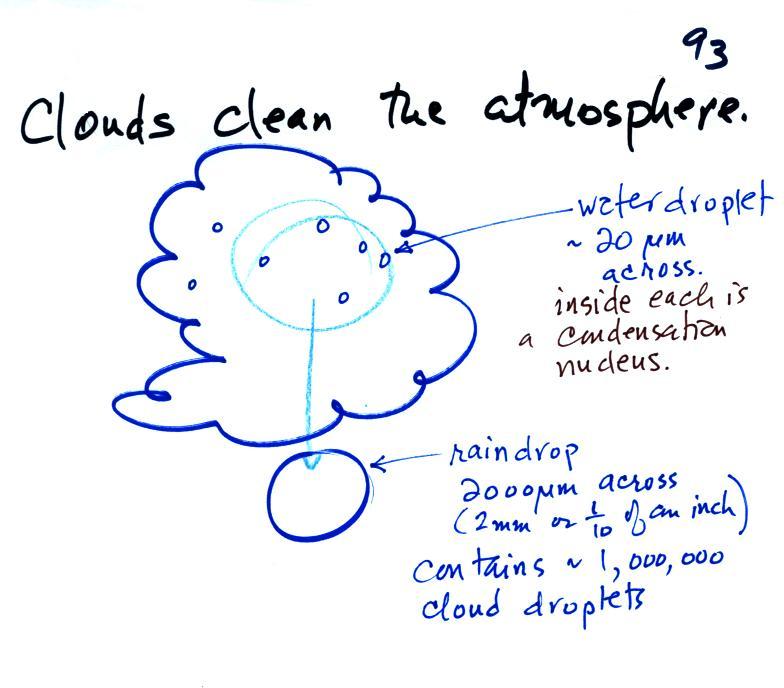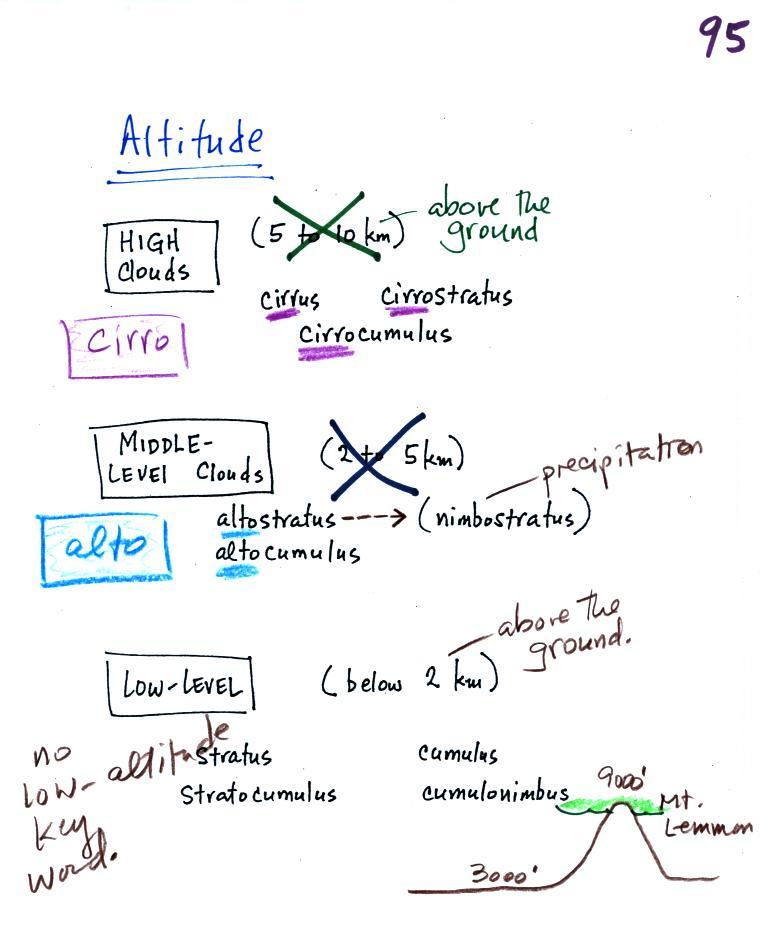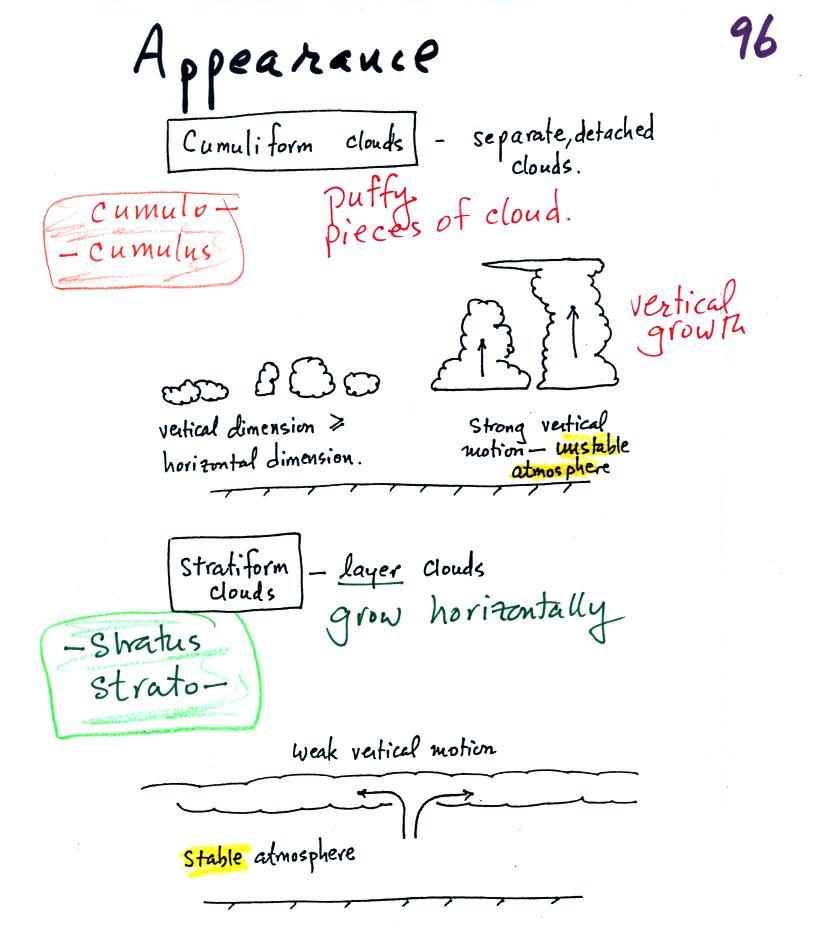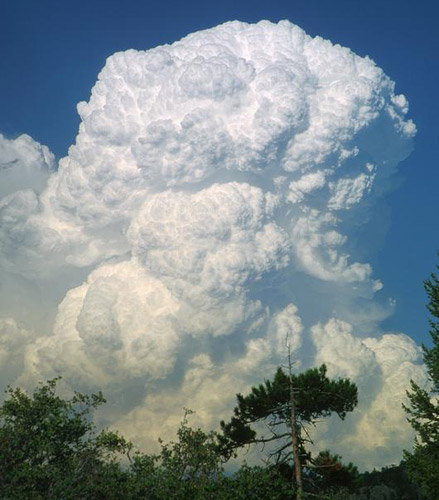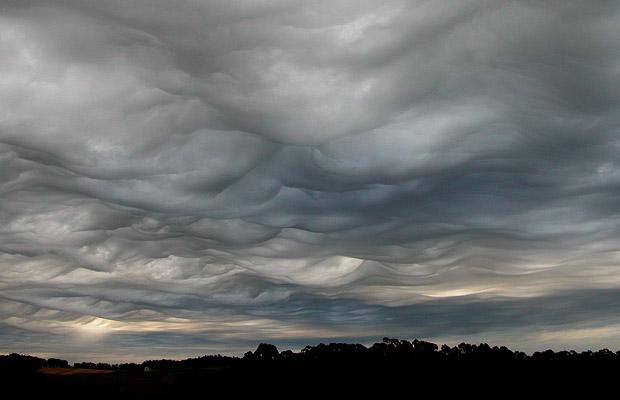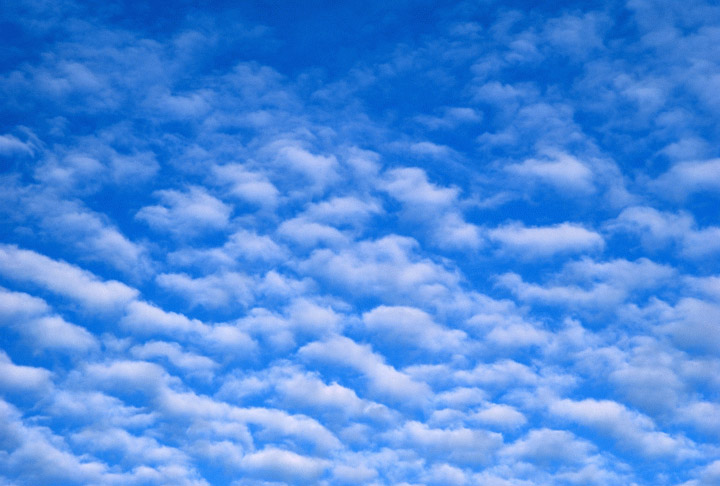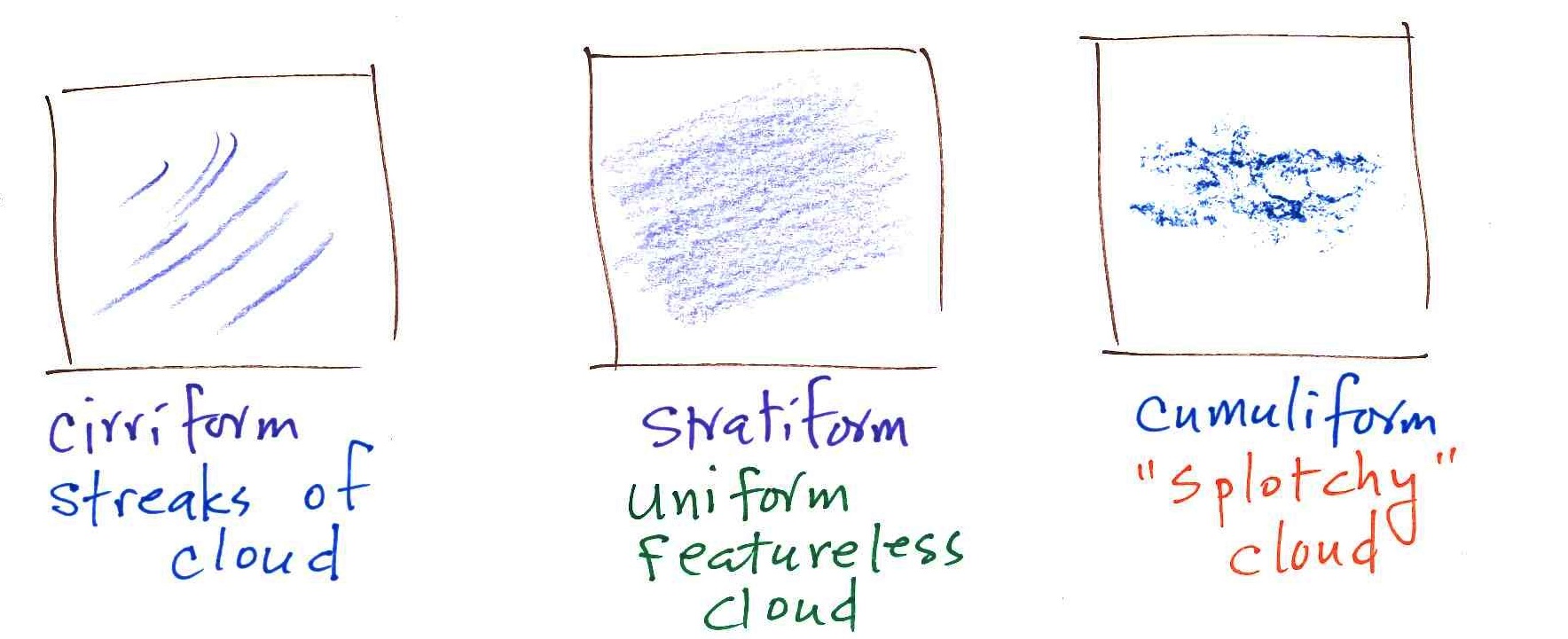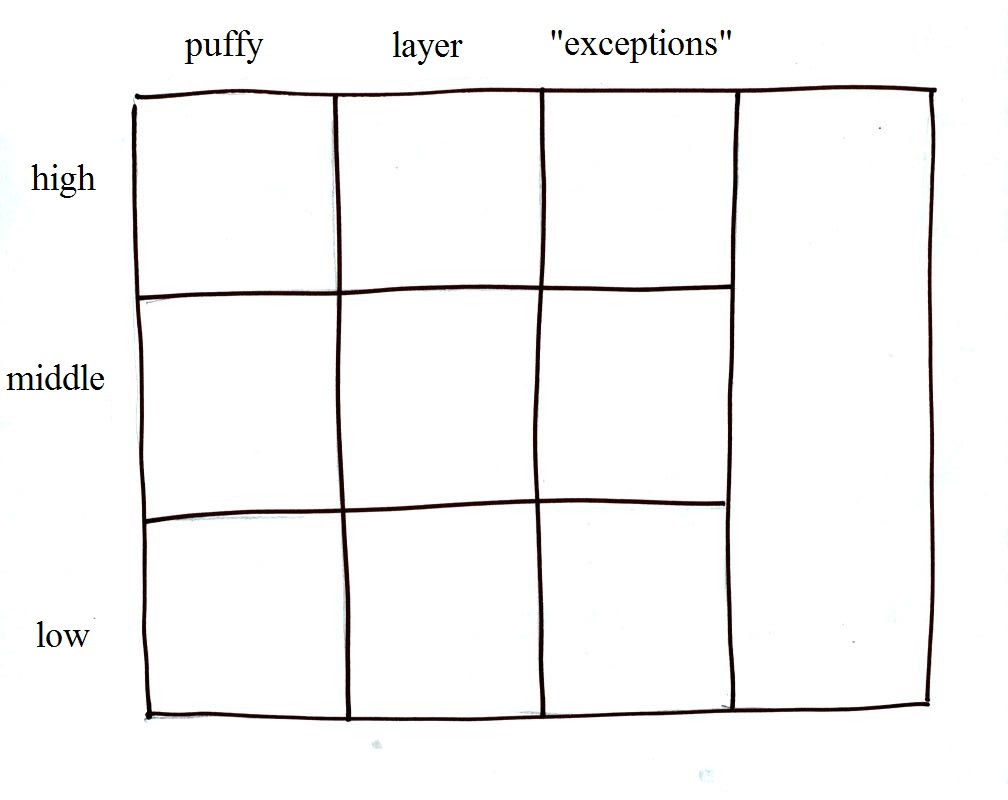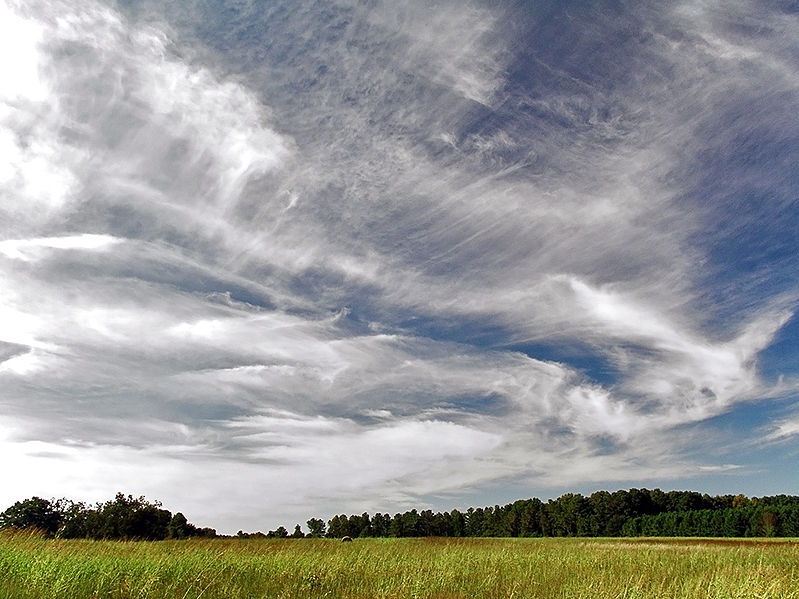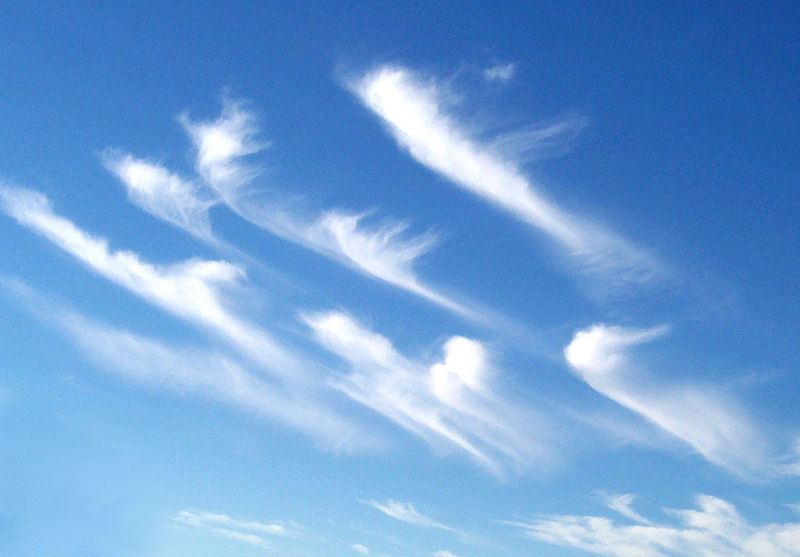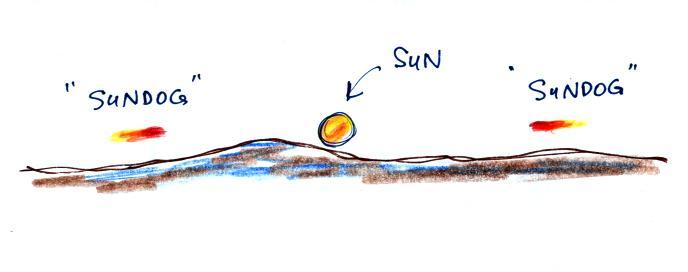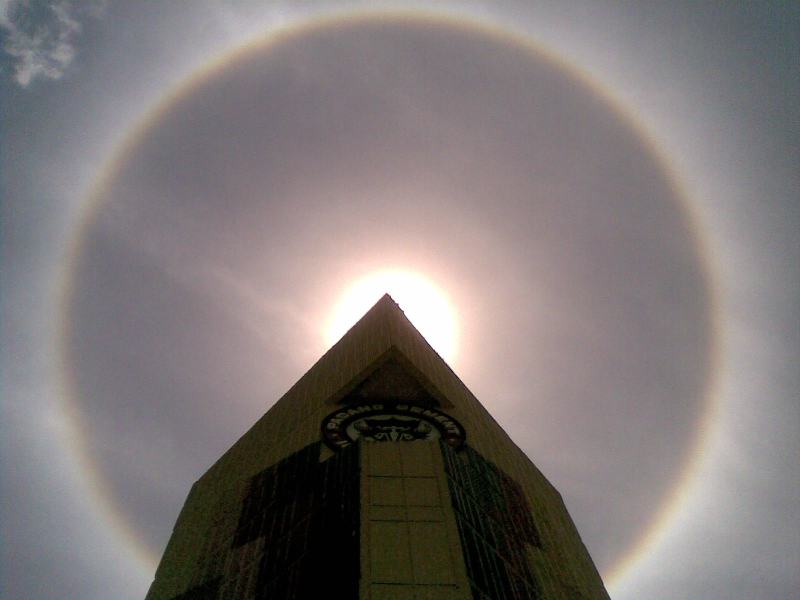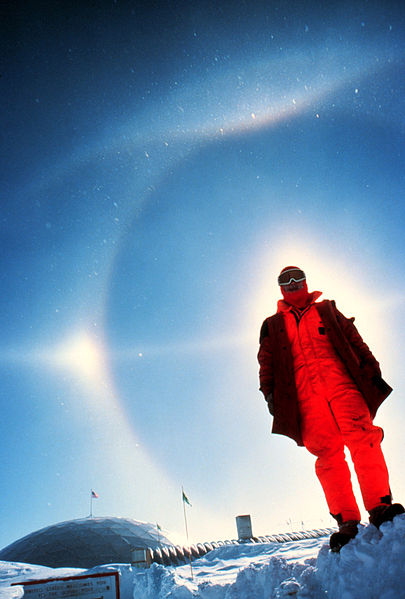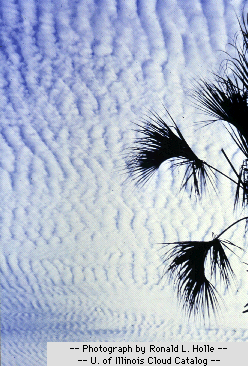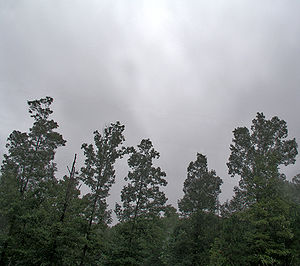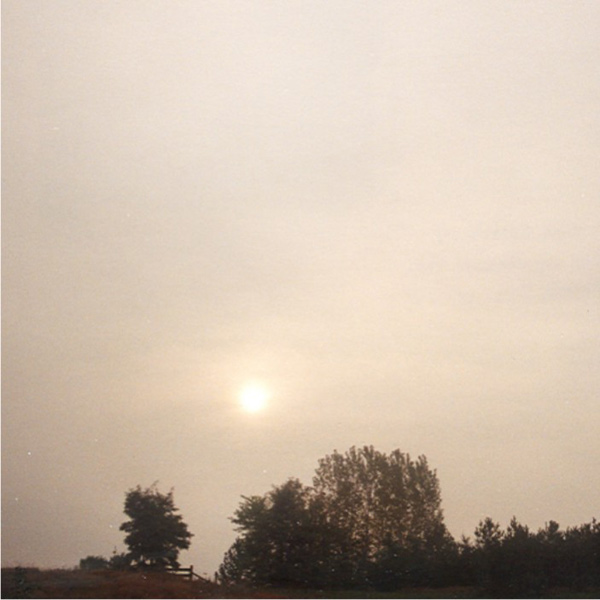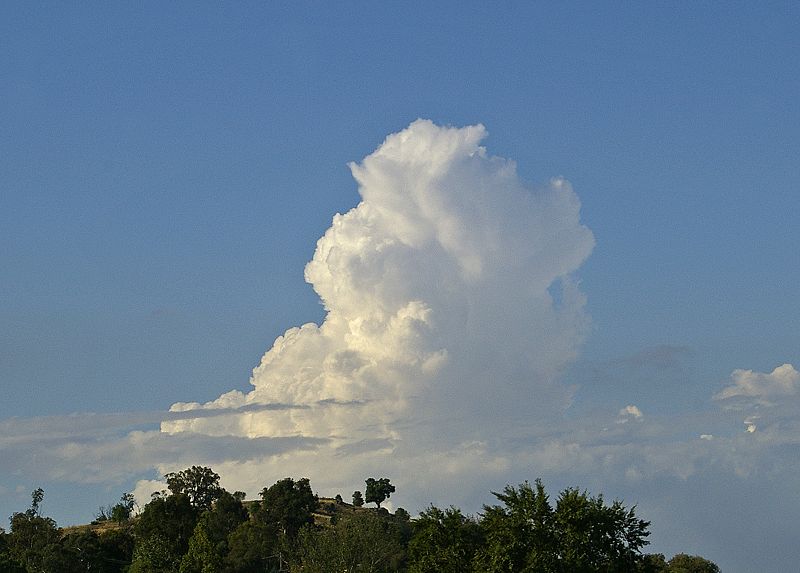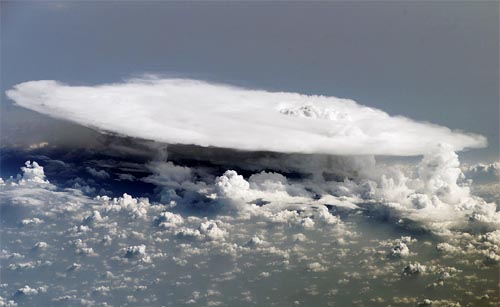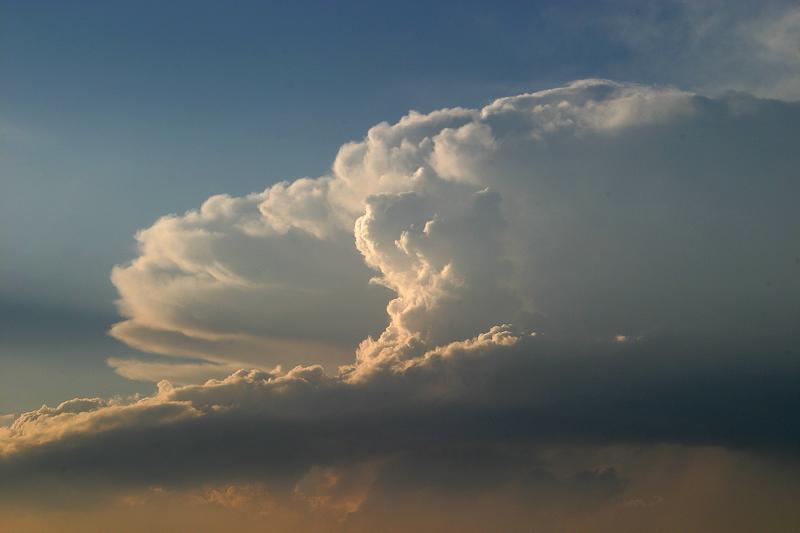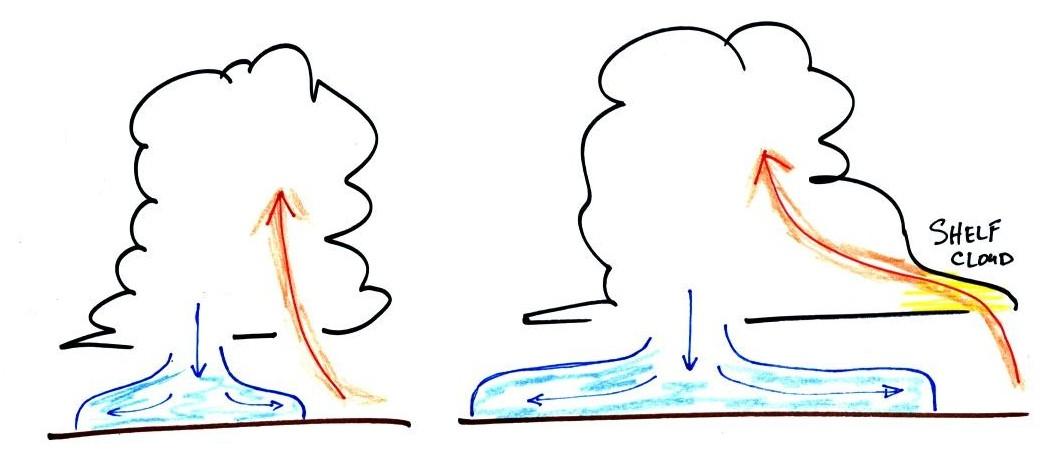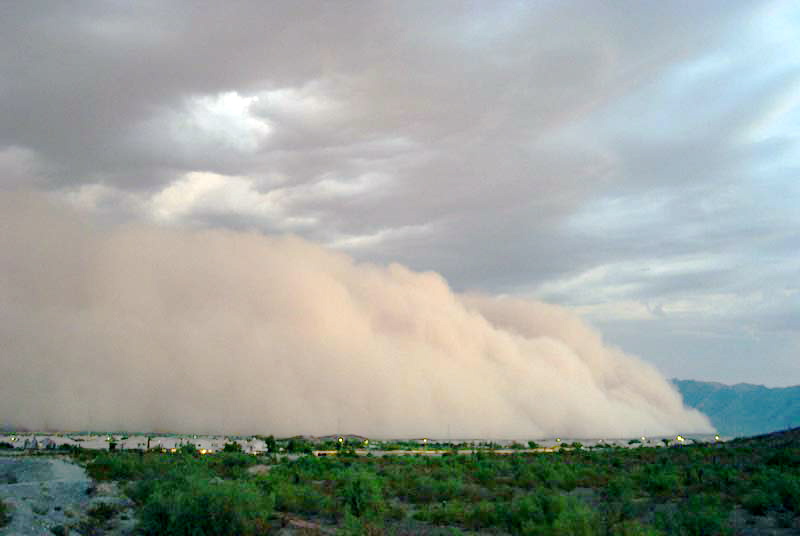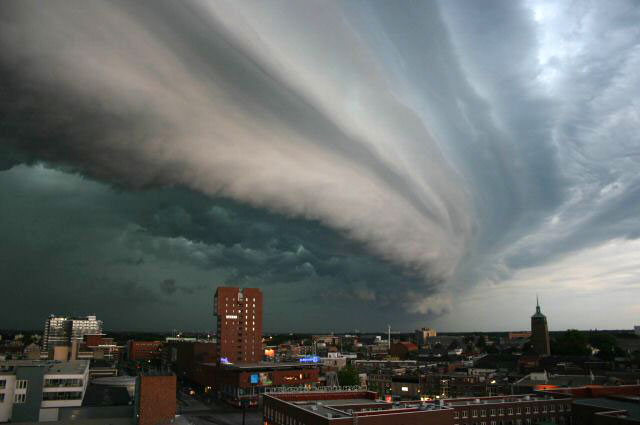Thu., Oct. 30, 2014
I was having trouble again finding some music for this
morning's class and finally settled on "Jezebel"
from Iron & Wine, "In Control"
Greensky Bluegrass, and someone I just heard about Shakey Graves
with "Roll
the Bones".
The 1S1P reports on two topics: "The Causes of the Seasons" and
"The Equinoxes and Manhattanhenge" have both been graded and were
returned in class. Reports on a couple of additional topics
are due next Tuesday (Nov. 4). I have also just added some
report writing guidelines for "The Earth's Changing Temperature"
topic.
The Experiment #3 reports are due next Tuesday. The
revised Experiment #2 reports are due next Thursday.
Quiz #3 is also next Thursday and the 2nd part of the Quiz #3
Study Guide is now online.
I will also try to get answers to the questions on the
handout distributed in class on Tuesday online sometime
today or tomorrow.
We started class with a quick look at condensation nuclei and the
role they play in the formation of haze, fog, and clouds.
You'll find this all at the end of the Tuesday
Oct. 28 online notes. There's a good chance
I'll also put some optional supplementary reading online on this
topic.
Making a cloud in a bottle
Next up was the cloud-in-a-bottle demonstration. Cooling
air & increasing relative humidity, condensation nuclei, and
scattering of light are all involved in this demonstration.
We used a strong, thick-walled, 4
liter vacuum flask (designed to not implode when all of the
air is pumped out of them, they really aren't designed to be
pressurized). There was a little water in the bottom of
the flask to moisten the air in the flask. Next we
pressurized the air in the flask with a bicycle pump. At
some point the pressure blows the cork out of the top of the
flask. The air in the flask expands outward and
cools. This sudden cooling increases the relative
humidity of the moist air in the flask to 100% ( probably more
than 100% momentarily ) and water vapor condenses onto cloud
condensation nuclei in the air. A very faint cloud
became visible at this point. Believe it or not that's
the way I like the demonstration to work.
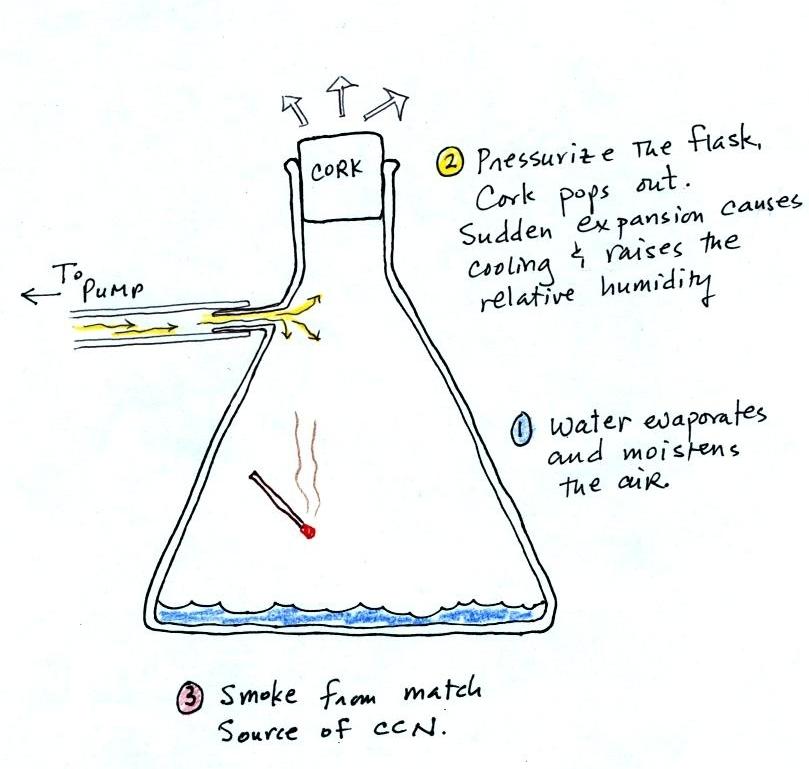
The demonstration was repeated an additional time with one
small change. A burning match was dropped into the
bottle. The smoke from the matches added lots of very small
particles, condensation nuclei, to the air in the flask. The
same amount of water vapor was available for cloud formation but
the cloud that formed this time was quite a bit "thicker" and much
easier to see. To be honest the burning match probably also
added a little water vapor (water vapor together with carbon
dioxide is one of the by products of combustion).
Clouds and climate change
This effect has some implications for climate change.
A cloud that forms in dirty air is composed of a large
number of small droplets (right figure above). This cloud is
more reflective than a cloud that forms in clean air, that is
composed of a smaller number of larger droplets (left
figure).
Combustion of fossil fuels adds carbon dioxide to the
atmosphere. There is concern that increasing carbon dioxide
concentrations (and other greenhouse gases) will enhance the
greenhouse effect and cause global warming. Combustion also
adds condensation nuclei to the atmosphere (just like the burning
match added smoke to the air in the flask). More
condensation nuclei might make it easier for clouds to form, might
make the clouds more reflective, and might cause cooling.
There is still quite a bit of uncertainty about how clouds might
change and how this might affect climate. Remember that
clouds are good absorbers of IR radiation and also emit IR
radiation.
Something I didn't mention today
(but probably did earlier in the semester when covering air
pollution): clouds are one of the best ways of cleaning the
atmosphere
A cloud is composed of small water droplets
(diameters of 10 or 20 micrometers) that form on particles (
diameters of perhaps 0.1 or 0.2 micrometers). The droplets "clump"
together to form a raindrop (diameters of 1000 or 2000 micrometers
which is 1 or 2 millimeters), and the raindrop carries the
particles to the ground. A typical raindrop can contain 1
million cloud droplets so a single raindrop can remove a lot of
particles from the air. You may have noticed how clear the
air seems the day after a rainstorm; distant mountains are crystal
clear and the sky has a deep blue color. Gaseous pollutants
can dissolve in the water droplets and be carried to the ground by
rainfall also. We'll be looking at the formation of
precipitation later this week.
And here's Mother Nature's version of the cloud in a bottle
demonstration.
A brush fire in this picture is
heating up air and causing it to rise. Combustion also
adds some moisture and lots of smoke particles to the
air. You can see that initially the rising air doesn't
form a cloud. A little higher and once the rising air
has cooled enough (to the dew point) a cloud does form.
And notice the cloud's appearance - puffy and not a layer
cloud. Cumulo or cumulus should be in the cloud
name. These kinds of fire caused clouds are called
pyrocumulus clouds. The example above is from a
Wikipedia article about these kinds of clouds.
The
fire in this case was the "Station Fire" burning near Los
Angeles in August 2009.
10 main cloud types
We spent the remainder of the class learning to identify and
name clouds.

I'm hoping you'll try to learn
these 10 cloud names. There is a smart and a
not-so-smart way of learning these names. The
not-so-smart way is to just memorize them. Because
they all sound alike you will inevitably get them mixed
up. And I'm hoping you'll be able to sketch each
of the clouds and describe them in words. That
gets to be a lot of material to try to just memorize.
A better way is to recognize that
all the cloud names are made up of key words.
Clouds are classified using just two criteria: altitude
and appearance. There are 4 key words that tell
you something about the cloud's altitude and appearance
(and a 5th key word for clouds that are producing
precipitation wasn't mentioned in class). My
recommendation is to learn the key words and what they
mean. Then you can usually
construct a cloud name by taking key words from both the
altitude and appearance groups and combining them.
Cloud
Altitude
Clouds are grouped into one of
three altitude categories: high, middle level, and
low. It is very hard to just look up in the sky and
determine a cloud's altitude. You will need to
look for other clues to distinguish
between high and middle altitude clouds. We'll
learn about some of the clues when we look at cloud
pictures later in the class.
Cirrus
or cirro
identifies a high altitude cloud. There are three
types of clouds found in the high altitude category..
Alto
in a cloud name means the cloud is found at middle
altitude. The arrow connecting altostratus and
nimbostratus indicates that they are basically the same
kind of cloud. When an altostratus cloud begins to
produce rain or snow its name is changed to
nimbostratus. A nimbostratus cloud may become
somewhat thicker and lower than an altostratus
cloud. Sometimes it might sneak into the low
altitude category.
There is no key word for low altitude clouds. Low
altitude clouds have bases that form 2 km or less above
the ground. The summit of Mt. Lemmon in the Santa Catalina mountains
north of Tucson is about 2 km above the valley
floor. Low altitude clouds will
have bases that form at or below the summit of Mt. Lemmon.
Examples
of puffy patchy (cumuliform) clouds found at
different altitudes
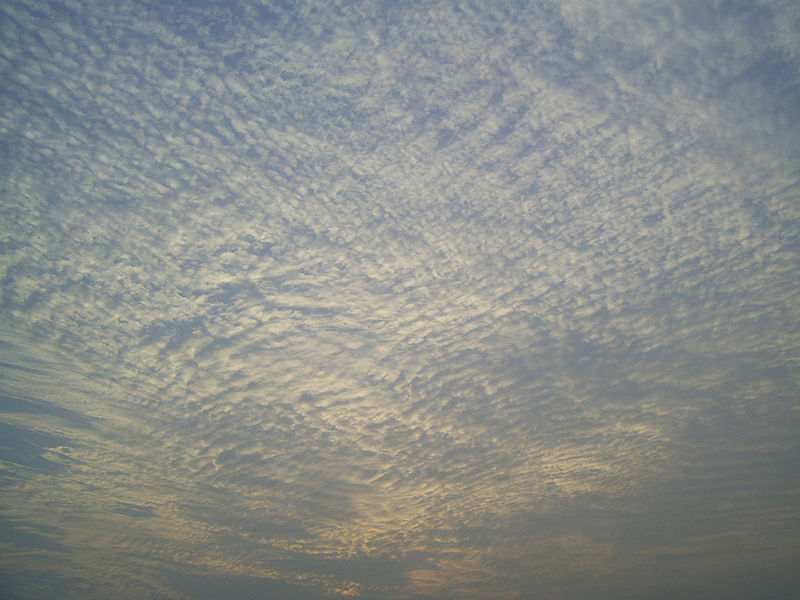 |
high altitude cloud
the patches of cloud are small because they are far
away
a cirrocumulus cloud
cirro means high altitude, cumulus means "patchy".
|
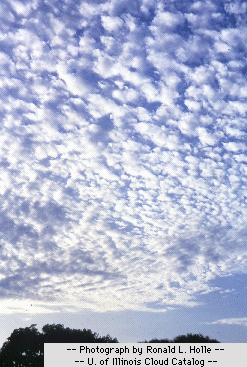 |
middle altitude cloud
the patches of cloud are bigger because they closer to the
ground
an altocumulus cloud |
 |
low altitude cloud
cumulus
clouds
(there is no key word for low altitude) |
Cloud Appearance
Cumulus clouds are often described as
resembling a head of cauliflower. Clouds can have a
patchy of puffy (or lumpy, wavy, splotchy or ripply)
appearance. These are cumuliform clouds and will have cumulo or
cumulus in their name. In an unstable
atmosphere cumuliform clouds will grow vertically.
Strong thunderstorms can produce dangerous severe weather.
|
|
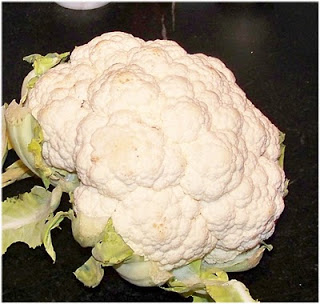
Head of cauliflower
source
|
|
|
|
ripples or waves
note the size, this is probably a middle or low level
cloud
source
|
This is probably a
middle or high level cloud because the ripples are
smaller (higher)
source
|
Stratiform clouds grow horizontally and
form layers. They form when the atmosphere is
stable. You'll find strato or
stratus in the cloud name. stratiform - as in rock
strata, stratosphere
rock strata at the
Grand Canyon
source
|

A side view of a layer cloud. How much
sunlight is able to shine through the cloud depends on how
thick the cloud is. A person on the ground may or
may not cast a shadow.
|
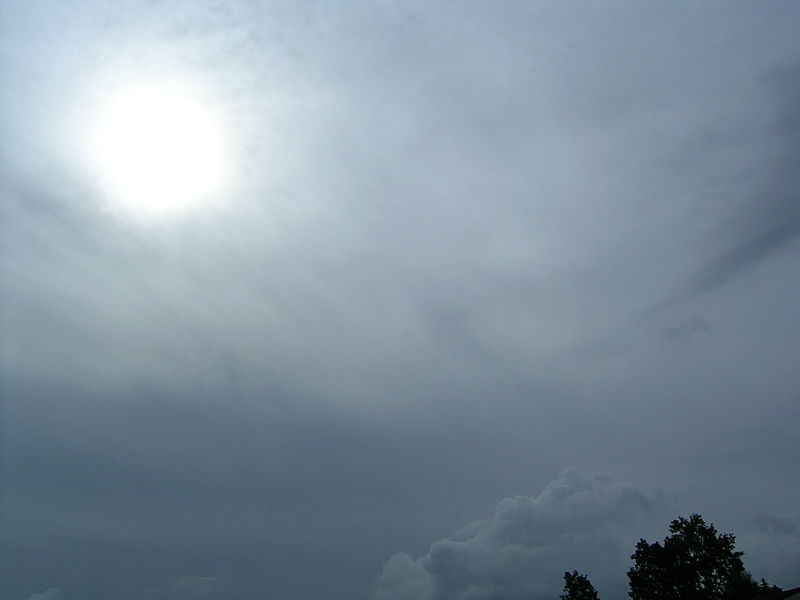
A view from the ground looking up
at the sun through a middle level layer cloud. The
sun is visible but blurred. (source)
|
Cloud appearance comparison
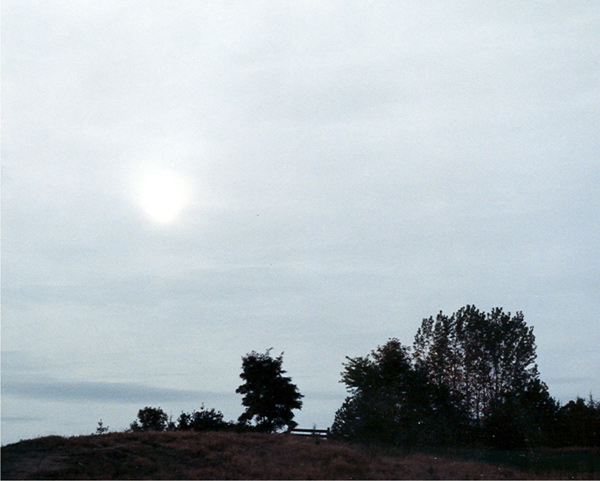 |
 |
 |
featureless Stratiform
cloud
(layer cloud)
an altostratus cloud
|
in between
case,
a "lumpy layer cloud"
this is named stratocumulus
|
patchy, puffy Cumuliform
cloud
cumulus clouds
|
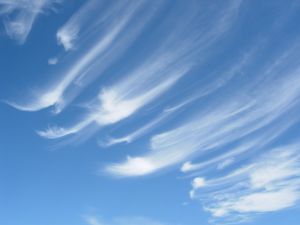
|
cirriform is sometimes used
as an appearance key word
source
of this image
|
Trying to draw the different clouds will help you to visualize
the differences in appearance
To draw the cirriform cloud you could use the sharp end of a
pencil. Using the side of a pencil as you would if you were
shading in or coloring in a picture was used in the center
picture. To make the right picture I put a bunch of ink on
the side of a sponge and pressed it against the paper.
There's a 5th key word that I have been neglecting to mention.
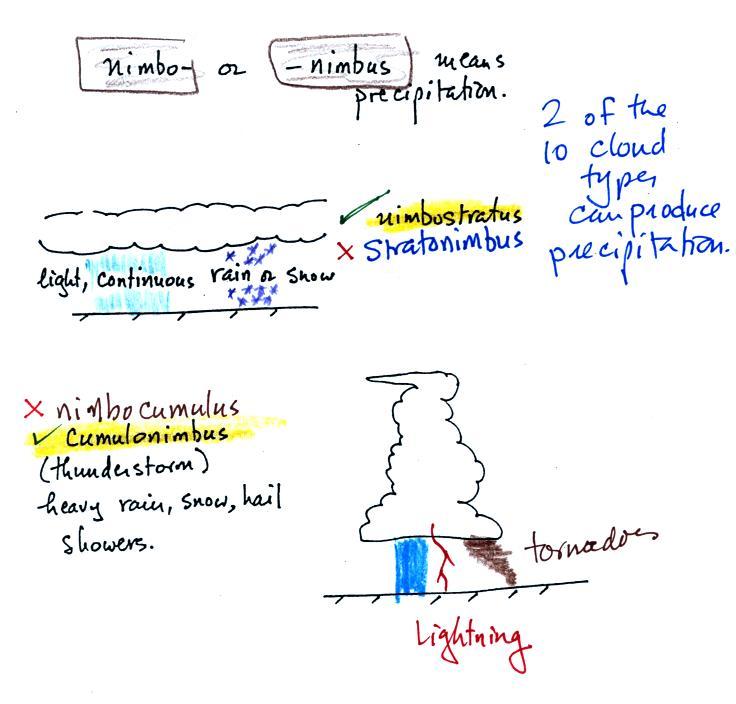
Nimbo or
nimbus, means precipitation (it is also the name of a local brewing company).
Only two of the 10 cloud types are able to produce
(significant amounts of) precipitation. It's not as easy
as you might think to make precipitation. We'll start to
look at precipitation producing processes in the next class.
Nimbostratus clouds tend to produce
fairly light precipitation over a large area. Cumulonimbus
clouds produce heavy showers over localized areas.
Thunderstorm clouds can also produce hail, lightning, and
tornadoes. Hail would never fall from a
Ns cloud.
While you are still learning the cloud names you might put the
correct key words together in the wrong order (stratonimbus instead of nimbostratus,
for example). You won't be penalized for those kinds of
errors in this class because you are putting together the right
two key words.
No penalty for putting the key words in the wrong
order
We've covered a fair amount of information and we're going to
be looking at a lot of cloud pictures. You'll need to
organize this material is a clear compact way. Here's
something that my help.
Take out a blank sheet of paper and draw a chart like shown
above at left. There are 10 boxes, one for each of the cloud
types. The three altitude categories run along the vertical
side of the chart and the two appearance categores run along the
top (not the exceptions column). This will force you to
remember the key words. Then you should be able to put a
name in each box, sketch each of the clouds (as done above at
right), and a short written description of each cloud.
Next we looked at photographs of
most of the 10 cloud types. You'll find the written descriptions of
the cloud types in the images below on pps
97-98 in the ClassNotes. You won't find the pictures, you
should draw those in yourself.
HIGH ALTITUDE CLOUDS

High altitude clouds are thin
because the air at high altitudes is very cold and cold air
can't contain much moisture, the raw material needed to make
clouds (the saturation mixing ratio for cold air is
very small). These clouds are also often blown around
by fast high altitude winds. Filamentary means
"stringy" or "streaky". If you imagine trying to paint
a Ci cloud you might dip a
small pointed brush in white paint brush it quickly and
lightly across a blue colored canvas. Here are some
pretty good photographs of cirrus clouds (they are all from
a Wikipedia
article on Cirrus Clouds)

A
cirrostratus cloud is a thin uniform white layer cloud (not
purple as shown in the figure) covering part or all of the
sky. They're so thin you can sometimes see blue sky
through the cloud layer. Haloes are a pretty sure
indication that a cirrostratus cloud is overhead. If
you were painting Cs clouds you could dip a broad brush in
watered down white paint and then paint back and forth
across the canvas.
Now a detour to briefly discuss
haloes and sundogs.
Haloes are produced when white light
(sunlight or moonlight) enters a 6 sided ice crystal.
The light is refracted (bent). The amount of bending
depends on the color (wavelength) of the light
(dispersion). The white light is split into colors
just as light passing through a glass prism. Crystals
like this (called columns) tend to be randomly oriented in
the air. That is why a halo forms a complete ring
around the sun or moon. You don't usually see all the
colors, usually just a hint of red or orange on the inner
edge of the halo.
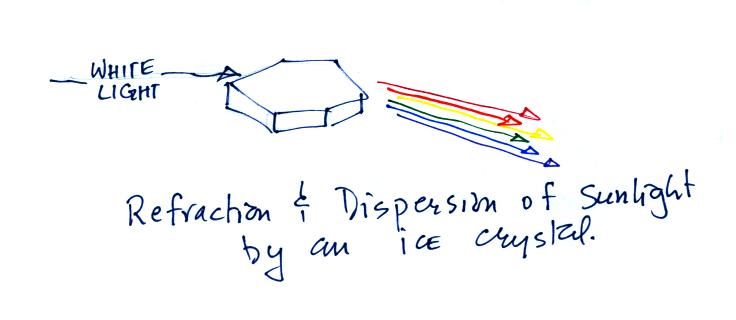
This is a
flatter crystal and is called a plate. These crystals
tend to all be horizontally oriented and produce sundogs
which are only a couple of small sections of a complete
halo. A sketch of a sundog is shown below.
Sundogs are pretty common. Keep an eye
out for them whenever you see high thin clouds in the sky at
sunrise or sunset.
A very bright halo is shown at upper
left with the sun partially blocked by a building
(the cloud is very thin and most of the sunlight is
able to shine straight through). A halo like
this would draw a crowd. Note the sky inside
the halo is darker than the sky outside the
halo. The halo at upper right is more typical
of what you might see in Tucson. Thin cirrus
clouds may appear thicker at sunrise or sunset
because the sun is shining through the cloud at a
steeper angle. Very bright sundogs (also known
as parhelia) are shown in the photograph at bottom
left. The sun in the photograph at right is
behind the person. You can see both a halo and
a sundog (the the left of the sun) in this
photograph. Sources of these
photographs: upper
left, upper
right, bottom
row.
If you spend enough time outdoors
looking up at the sky you will eventually see all 10 cloud
types. Cirrus and cirrostratus clouds are fairly
common. Cirrocumulus clouds are a little more
unusual. The same is true with animals,
some are more commonly seen in the desert around Tucson (and
even in town) than others.

To
paint a Cc cloud you could dip a sponge in white paint
and press it gently against the canvas (as I tried to do
earlier). You would leave a patchy, splotchy
appearing cloud (sometimes you might see small
ripples). It is the patchy (or wavy) appearance
that makes it a cumuliform cloud.
The table below compares
cirrostratus (the cloud on the left without texture)
with a good example of a cirrocumulus cloud (the
"splotchy" appearing cloud on the right). Both
photographs are from the Wikipedia article mentioned
earlier.
MIDDLE ALTITUDE CLOUDS
Altocumulus
clouds are pretty common. Note since
it is hard to accurately judge altitude, you must rely on
cloud element size (thumbnail size in the case of Ac) to
determine whether a cloud belongs in the high or middle
altitude category. The cloud elements in Ac
clouds appear larger than in Cc because the cloud is closer to
the ground. A couple of photographs are shown below
(source: Ron Holle for WW2010 Department of
Atmospheric Sciences, the University of Illinois at
Urband-Champaign)
There's a much larger collection in this gallery
of images. The fact that there are so many examples
is an indication of how common this particular type of cloud is.
Altostratus
clouds are thick enough that you probably won't see a
shadow if you look down at your feet. The sun
may or may not be visible through the cloud.
Three examples are shown below (the first is from a
Wikipedia article, the
middle and right photograph are from an Environment
Canada web page)
When (if) an
altostratus cloud begins to produce precipitation, its
name is changed to nimbostratus.
Unless you were there
and could see if it was raining or snowing you might
call this an altostratus or even a stratus
cloud. The smaller darker cloud fragments that
are below the main layer cloud are "scud" (stratus
fractus) clouds (source
of this image).
LOW ALTITUDE CLOUDS
This cloud name is a little
unusual because the two key words for cloud appearance have
been combined, but that's a good description of this cloud
type - a "lumpy layer cloud". Remember there isn't a key
word for low altitude clouds.

|

|
Because they are closer to
the ground, the separate patches of Sc are
bigger, about fist size (sources of these
images:left
photo, right
photo ).
The patches of Ac, remember, were about thumb
nail size.. If the cloud fragments in the
photo at right are clearly separate from each
other (and you would need to be underneath the
clouds so that you could look to make this
determination) these clouds would probably be
"fair weather" cumulus. If the patches of
cloud are touching each other (clearly the case
in the left photo) then stratocumulus would be
the correct designation.

I didn't show any photos of stratus
clouds in class. Other than being closer to the
ground they really aren't much different from altostratus
or nimbostratus.

Cumulus
clouds come with different degrees of vertical
development. The fair weather cumulus clouds don't grow
much vertically at all. A cumulus congestus
cloud is an intermediate stage between fair weather cumulus
and a thunderstorm.
Photographs
of "fair weather" cumulus on the left (source)
and cumulus congestus or towering cumulus on the right (source)
THUNDERSTORMS

There
are lots of distinctive features on cumulonimbus clouds
including the flat anvil top and the lumpy mammatus clouds sometimes found
on the underside of the anvil.
Cold
dense downdraft winds hit the ground below a
thunderstorm and spread out horizontally underneath the
cloud. The leading edge of these winds produces a
gust front (in Arizona dust front might be a little more
descriptive). Winds at the ground below a
thunderstorm can exceed 100 MPH, stronger than many
tornadoes.
The top of a thunderstorm
(violet in the sketch) is cold enough that it will be
composed of just ice crystals. The bottom (green) is
composed of water droplets. In the middle of the
cloud (blue) both water droplets and ice crystals exist
together at temperatures below freezing (the water
droplets have a hard time freezing). Water and ice
can also be found together in nimbostratus clouds.
We will see that this mixed phase region of the cloud is
important for precipitation formation. It is also
where the electricity that produces lightning is
generated.
The top left
photo shows a thunderstorm viewed from space (source: NASA Earth
Observatory). The flat anvil top is the dominant
feature. The remaining three photographs are from the UCAR Digital Image
Library. The bottom left photograph shows heavy by
localized rain falling from a thunderstorm. At bottom
right is a photograph of mammatus clouds found on the
underside of the flat anvil cloud.
Cold air
spilling out of the base of a thunderstorm is just beginning
to move outward from the bottom center of
the storm in the picture at
left. In the picture at right the cold air has moved
further outward and has begun to get in the way of the
updraft. The updraft is forced to rise earlier and a
little ways away from the center of the thunderstorm.
Note how this rising air has formed an extra lip of
cloud. This is called a shelf cloud.
Here's a photograph of the dust stirred
up by the thunderstorm downdraft winds (blowing into
Ahwatukee, Pheonix on Aug. 22, 2003). The thunderstorm
would be off the left somewhere and the dust front would be
moving toward the right. Dust storms like this are
often called "haboobs" (source of
this image).
We'll learn more about the
hazards associated with strong downdraft winds later in the
semester when we cover thunderstorms.
Shelf clouds can sometimes be quite
impressive (the picture above is from a Wikipedia
article on arcus clouds).
The main part
of the thunderstorm would be to the left. Cold air is
moving from left to right in this picture. The shelf cloud
forms along the advancing edge of the gust front.
Here's the completed cloud chart and here's a link to a cloud
chart on a National Weather Service webpage with
actual photographs. See
if you can fill in the cloud names using just the abbreviations
and pictures of the clouds as clues.
